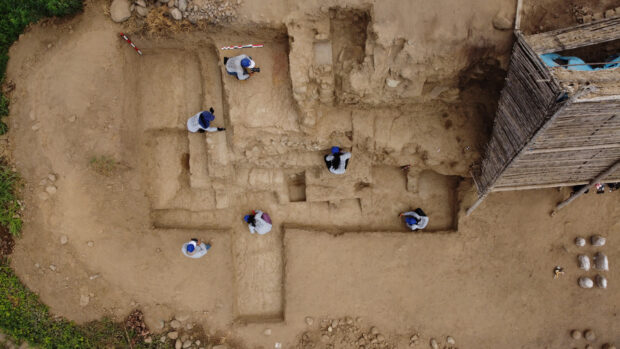
Archaeologists work on a 4,500-year-old polychrome wall, part of a temple belonging to the Late Preceramic period, in the Huaca Tomabal in the Valley of Viru, Peru August 18, 2023. Feren Castillo/PAVI/Handout via REUTERS
LIMA — An ancient polychrome wall discovered in northern Peru is believed to be over 4,000 years old and could have been part of a ceremonial temple, according to archaeologists, offering new insights into the region’s historic cultures.
The wall was first stumbled upon by farmers in 2020 during harvesting work, prompting an extended dig and work to determine its origins, said archaeologist Feren Castillo, head of a research project in the coastal region of La Libertad.
“Three years later we started a new procedure whose results showed us its age … Today we are sure it’s a building built during the Pre-ceramic Period (the initial period of the Andean civilizations) between 4,000 and 4,500 years ago”, the expert said this week”, the expert said this week.
The remains of the ancient building were revealed in the Viru Valley, some 480 km (298 miles) north of Lima.
The wall is estimated to be about three meters (9.84 feet) high and presents triangular geometric lines with occasional shades of red and yellow, Castillo added.
“The most important section … must have been a pre-ceramic temple, with a hearth at its center that we will likely be able to excavate later,” he said.
The north of Peru is home to ancient ceremonial complexes such as Caral, which is about 5,000 years old; and to the mysterious, gigantic lines of Nazca, drawn in the desert more than 1,500 years ago, in the Ica region.
The most important archaeological center in Peru is the ruins of Machu Picchu located in the Cusco region, which is a vestige of the Inca Empire that dominated the southern part of the continent 500 years ago and extended from southern Ecuador and Colombia to central Chile.